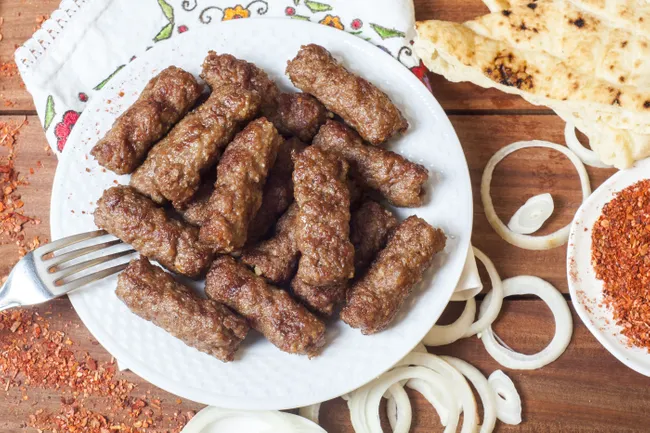Introduction: Serbian culinary heritage
Serbia is a nation with a rich and diverse culinary heritage that has evolved over centuries. The country’s cuisine is influenced by its geographical location, history, and cultural diversity. Serbian cuisine is characterized by a range of hearty, savory, and rich flavors that reflect the country’s agricultural and culinary traditions.
Serbian cuisine is renowned for its use of fresh, high-quality ingredients, including homegrown vegetables, fruits, herbs, and meat. The country’s culinary traditions are deeply rooted in its rural regions, where old-fashioned cooking methods and recipes have been passed down from generation to generation. Today, Serbian cuisine continues to evolve, with new recipes and flavors being added to the existing culinary repertoire.
The influence of geography on Serbian cuisine
Serbian cuisine is heavily influenced by the country’s geography, which is diverse and varied. The country has a long coastline along the Adriatic Sea, rugged mountains, rolling hills, and fertile plains. These geographic features have contributed to the development of different regional culinary specialties that are unique to each area.
In the northern regions of Serbia, where the terrain is flat and fertile, the cuisine is characterized by a variety of dairy products, bread, and meat. The southern regions, which are mountainous, have a cuisine that is based on Mediterranean-style dishes, with plenty of fresh fruits, vegetables, and olive oil. The coastal regions, on the other hand, have a cuisine that is heavily influenced by seafood, including fish and shellfish.
Traditional Serbian dishes and their ingredients
Serbian cuisine features a range of traditional dishes that are prepared using local ingredients and recipes that have been passed down through generations. Some of the most popular Serbian dishes include cevapi, a grilled minced meat dish served with bread, onions, and kajmak (a type of Balkan cheese). Another popular dish is sarma, which consists of stuffed cabbage leaves filled with meat, rice, and spices.
Other traditional dishes include gibanica, a savory pastry made with phyllo dough, cheese, and eggs, and ajvar, a spread made from roasted peppers, garlic, and eggplant. Rakija, a type of fruit brandy, is also a popular drink in Serbia and is often served as an aperitif or digestif.
Culinary rituals and customs in Serbian culture
Serbian culture has a strong tradition of hospitality, and food plays an important role in social gatherings and celebrations. One of the most important culinary customs in Serbian culture is the ritual of slava, which is a celebration of a family’s patron saint.
During slava, families prepare a range of traditional dishes and invite their friends and relatives to share in the festivities. Other culinary customs include the preparation of kolac, a special bread that is baked for special occasions, and the ritual of breaking bread, which involves the sharing of bread and salt as a sign of hospitality and friendship.
Festive and religious culinary traditions
Serbia has a number of festive and religious culinary traditions that are celebrated throughout the year. For example, during Christmas, families prepare a special meal consisting of roasted pork, turkey, and a range of traditional side dishes.
Similarly, during Easter, families prepare a range of traditional dishes, including roast lamb, eggs, and a sweet bread called pinca. Other important religious festivals, such as St. George’s Day and St. John’s Day, are also celebrated with traditional dishes and culinary customs.
The global popularity of Serbian food
In recent years, Serbian cuisine has gained popularity on the global stage, with Serbian restaurants opening up in cities around the world. The cuisine’s unique flavors, fresh ingredients, and hearty dishes have made it a hit with foodies and culinary enthusiasts alike.
Popular Serbian dishes such as cevapi, ajvar, and sarma have become well-known beyond the borders of Serbia, and are now enjoyed by food lovers around the world. The global popularity of Serbian cuisine is a testament to the rich culinary heritage of this fascinating country.

